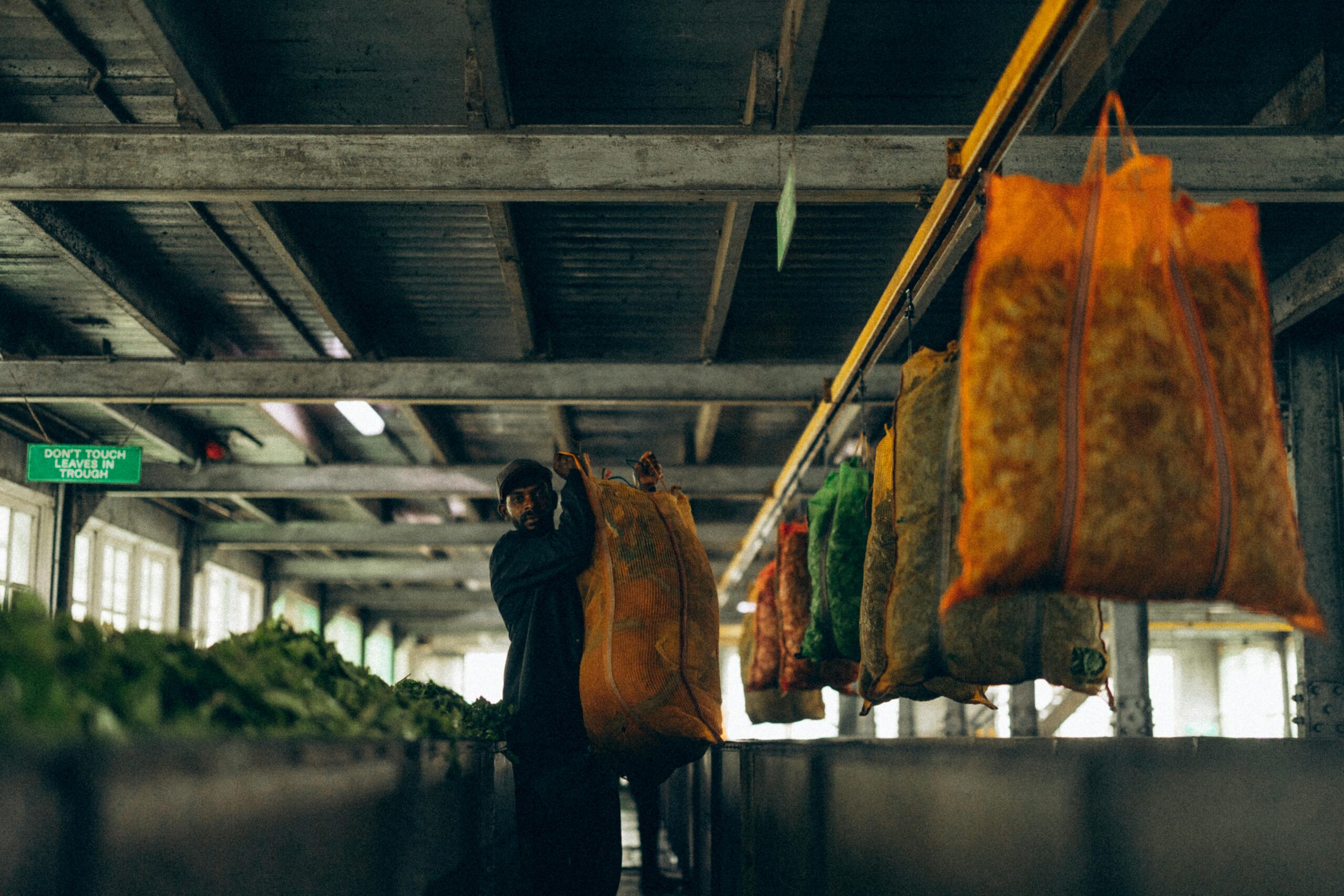Canada’s Daring New Foreign Worker Stream: A Glimpse into Agriculture & Fish Processing’s Promising Future
Table of Contents
- Introduction: A Bold Step Forward for Canadian Agriculture and Fish Processing
- IRCC’s Vision for a Dedicated Foreign Worker Stream
- Key Objectives of the New Stream
- Potential Benefits for Employers and Workers
- The Agri-Food Pilot: A Foundation for Future Success
- Stakeholder Consultations: Shaping the Stream’s Design
- Anticipated Challenges and Mitigation Strategies
- Impact on Rural Communities and Regional Economies
- Long-Term Goals and Sustainability
- FAQ
Introduction: A Bold Step Forward for Canadian Agriculture and Fish Processing
Canada’s Immigration, Refugees and Citizenship Canada (IRCC) is planning to launch a brand new foreign worker stream in 2025, specifically targeted at the agriculture and fish processing sectors. This ambitious initiative aims to address persistent labor shortages and support the growth of these vital industries. The sectors have long faced challenges in attracting and retaining domestic workers, leading to reliance on temporary foreign workers (TFWs). This new stream represents a significant shift towards a more streamlined and dedicated approach to meet the evolving needs of these industries and is a testament to Canada’s commitment to supporting key sectors of its economy by ensuring they have access to the skilled labor they require.
IRCC’s Vision for a Dedicated Foreign Worker Stream
IRCC’s vision is to create a program that is responsive, efficient, and tailored to the unique demands of the agriculture and fish processing industries. The current Temporary Foreign Worker Program (TFWP), while helpful, can be cumbersome and may not always align perfectly with the specific needs of these sectors. A dedicated stream will allow for more targeted recruitment, training, and support for foreign workers, ultimately benefiting both employers and employees. The goal is to establish a system that not only fills labor gaps but also promotes fair labor practices and supports the long-term integration of foreign workers into Canadian society. This is being accomplished through careful planning and consultation with those involved, including businesses, workers, and government organizations.
Key Objectives of the New Stream
The new foreign worker stream aims to achieve several key objectives:
- Address Labor Shortages: Ensure that the agriculture and fish processing sectors have access to a reliable pool of qualified workers.
- Streamline Application Processes: Simplify the process for employers to hire foreign workers, reducing administrative burdens and wait times.
- Enhance Worker Protection: Implement measures to protect the rights and well-being of foreign workers, preventing exploitation and ensuring fair treatment.
- Support Regional Economies: Contribute to the economic growth and sustainability of rural communities that rely on agriculture and fish processing.
- Promote Skills Development: Encourage training and skills upgrading opportunities for foreign workers, enhancing their long-term employability.
Potential Benefits for Employers and Workers
The dedicated stream promises a myriad of benefits for both employers and workers. For employers, it offers a more reliable and efficient way to address labor shortages, allowing them to maintain productivity and meet market demands. Reduced administrative burdens and faster processing times will save time and resources. For workers, the stream provides a pathway to secure employment in Canada, with opportunities for skills development and potential pathways to permanent residency. Enhanced worker protections will ensure fair treatment and safe working conditions. This mutually beneficial arrangement promotes economic growth and social well-being.
The Agri-Food Pilot: A Foundation for Future Success
The existing Agri-Food Pilot program serves as a valuable foundation for the new foreign worker stream. The Agri-Food Pilot, launched in recent years, has provided valuable insights into the specific needs and challenges of the agriculture sector. Lessons learned from this pilot program, including best practices for recruitment, integration, and worker support, will inform the design and implementation of the new stream. The pilot has also helped identify key occupations and skill sets that are in high demand, allowing IRCC to target the new stream more effectively. This strategic approach ensures that the new stream is built on a solid foundation of practical experience and evidence-based policy.
Stakeholder Consultations: Shaping the Stream’s Design
IRCC is actively engaging with stakeholders, including employers, industry associations, labor groups, and provincial governments, to gather input and shape the design of the new stream. These consultations are crucial for ensuring that the stream is responsive to the needs of all stakeholders and that it aligns with regional and national priorities. Stakeholder feedback will inform key aspects of the stream, such as eligibility criteria, application procedures, and worker support services. This collaborative approach ensures that the new stream is well-informed, balanced, and sustainable.
Anticipated Challenges and Mitigation Strategies
While the new foreign worker stream holds great promise, several challenges must be addressed to ensure its success. These challenges include:
- Ensuring adequate housing and support services for foreign workers, particularly in rural areas.
- Preventing exploitation and ensuring fair labor practices.
- Addressing language barriers and cultural integration challenges.
- Coordinating efforts with provincial governments and other stakeholders.
To mitigate these challenges, IRCC is exploring various strategies, such as partnering with community organizations to provide settlement services, implementing stricter enforcement measures to prevent exploitation, and providing language training and cultural orientation programs. Proactive planning and collaboration are essential for overcoming these challenges and ensuring the long-term success of the stream.
Impact on Rural Communities and Regional Economies
The new foreign worker stream is expected to have a significant positive impact on rural communities and regional economies that rely on agriculture and fish processing. By addressing labor shortages, the stream will help maintain productivity and support economic growth in these regions. Foreign workers often bring valuable skills and experience that can contribute to the innovation and competitiveness of local industries. Additionally, the presence of foreign workers can help diversify communities and foster cultural exchange. This influx of labor and skills can revitalize rural areas and ensure their long-term viability.
Long-Term Goals and Sustainability
The long-term goal of the new foreign worker stream is to create a sustainable and equitable system that benefits both employers and workers. This includes promoting skills development and training opportunities for foreign workers, facilitating their integration into Canadian society, and providing pathways to permanent residency for those who wish to stay and contribute to the country’s economy. By investing in the well-being and success of foreign workers, Canada can ensure that its agriculture and fish processing sectors remain competitive and resilient in the long term. This comprehensive approach will contribute to the economic prosperity and social cohesion of the country.
FAQ
What is the purpose of the new foreign worker stream planned for 2025?
The new foreign worker stream aims to address labor shortages in Canada’s agriculture and fish processing sectors, providing these industries with a reliable source of qualified workers to maintain productivity and meet market demands.
What are the key objectives of this new foreign worker stream?
The key objectives include addressing labor shortages, streamlining application processes for employers, enhancing worker protection, supporting regional economies, and promoting skills development among foreign workers.
How will this new stream benefit employers in the agriculture and fish processing sectors?
Employers will benefit from a more reliable and efficient way to address labor shortages, reduced administrative burdens, and faster processing times, allowing them to maintain productivity and meet market demands.
What measures will be implemented to protect the rights and well-being of foreign workers under this new stream?
The stream will implement measures to prevent exploitation and ensure fair treatment and safe working conditions for foreign workers, promoting their well-being and integration into Canadian society.
What is the role of the Agri-Food Pilot program in the development of the new foreign worker stream?
The Agri-Food Pilot program serves as a valuable foundation, providing insights into the specific needs and challenges of the agriculture sector, informing the design and implementation of the new stream with best practices for recruitment, integration, and worker support.
How will IRCC ensure that the new stream is responsive to the needs of all stakeholders?
IRCC is actively engaging with stakeholders, including employers, industry associations, labor groups, and provincial governments, to gather input and shape the design of the new stream, ensuring it aligns with regional and national priorities.
Talk to us to find out more. ->
The content above is not intended to provide legal advice or opinions of any kind and may not be used for professional or commercial purposes.







